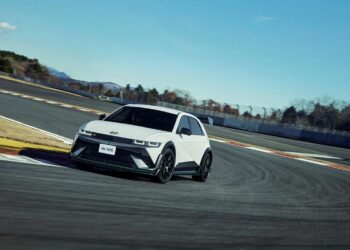Customization is at the heart of drifting, where the right modifications can turn an ordinary car into a drift-ready machine capable of executing breathtaking slides. Building a drift car is both an art and a science, requiring a deep understanding of the mechanics involved, as well as an appreciation for the aesthetics that make a drift car stand out. From suspension tuning to engine upgrades, every aspect of a drift car is carefully considered and customized to achieve the perfect balance of power, control, and style.
The Importance of Suspension in Drift Car Customization
One of the most critical components of any drift car is its suspension system. The suspension plays a crucial role in how a car handles during a drift, affecting everything from the car’s stability to its ability to initiate and maintain a slide. Customizing the suspension is often the first step in building a drift car, as it directly impacts the car’s performance on the track.
Most drift cars are equipped with adjustable coilovers, which allow the driver to fine-tune the car’s ride height, damping, and spring rates. Lowering the car’s center of gravity by reducing ride height improves stability, while stiffer springs and dampers help to minimize body roll during aggressive cornering. This setup allows for sharper, more controlled drifts, as the car remains stable even at high speeds and extreme angles.
Another important aspect of suspension customization is camber adjustment. Camber refers to the angle of the wheels relative to the ground, and adjusting the camber can have a significant impact on how the car handles. Negative camber, where the top of the wheels tilt inward, is commonly used in drifting to increase the contact patch of the tires during a slide, improving grip and control.
Steering angle kits are also a popular modification in drift cars. These kits increase the amount of steering lock available, allowing the driver to maintain control at more extreme drift angles. This is particularly useful in tandem drifting, where maintaining proximity to the lead car often requires quick and precise steering inputs.
Engine Upgrades: Powering the Slide
Power is essential in drifting, as it allows the driver to break traction and maintain high-speed slides. Customizing the engine to produce more power and deliver it in a smooth, predictable manner is a key part of drift car customization.
Turbocharging and supercharging are common methods of increasing engine power in drift cars. Turbochargers use exhaust gases to spin a turbine, forcing more air into the engine and increasing power output. Superchargers, on the other hand, are driven by the engine’s crankshaft and provide an immediate boost in power. Both methods have their advantages, with turbochargers generally providing more power at higher RPMs, and superchargers delivering instant throttle response.
In addition to forced induction, many drifters opt for engine swaps to achieve the desired power level. Popular engine swaps include installing a Toyota 2JZ or Nissan RB26 engine, both of which are known for their durability and potential for high power output. These engines are often built with forged internals, upgraded fuel systems, and custom tuning to handle the stresses of drifting.
Exhaust systems are also customized to improve engine performance and produce the distinctive sound associated with drift cars. A free-flowing exhaust reduces backpressure, allowing the engine to breathe more easily and produce more power. The exhaust note is also an important aspect of a drift car’s personality, with many drivers opting for loud, aggressive-sounding systems that add to the spectacle of drifting.
Aesthetics: The Art of Drift Car Customization
While performance is paramount in drift car customization, aesthetics also play a significant role. Drift cars are known for their bold, aggressive looks, with wide body kits, flashy paint jobs, and distinctive liveries being common features. The aesthetic customization of a drift car is often a reflection of the driver’s personality and style, making each car unique.
Wide body kits are a popular modification in drift cars, as they not only enhance the car’s appearance but also provide practical benefits. Wider fenders allow for the use of wider tires, which can improve grip and handling. The wider stance also contributes to the car’s stability during a drift, reducing the likelihood of the car tipping over or losing control.
Custom paint jobs and liveries are another hallmark of drift car aesthetics. Drifters often use bright colors, intricate designs, and sponsor logos to create a visually striking appearance that stands out on the track. The livery of a drift car is more than just decoration; it is a statement of the driver’s identity and a key part of the sport’s culture.
Interior modifications are also common in drift cars, with drivers often stripping out unnecessary components to reduce weight. Racing seats, roll cages, and harnesses are installed to improve safety and provide a more focused driving experience. The interior is often minimalist, with only the essential controls and gauges remaining.
Drift car customization is a meticulous process that combines performance enhancements with aesthetic expression. From suspension tuning to engine upgrades and visual modifications, every aspect of a drift car is carefully crafted to achieve the perfect balance of power, control, and style. The result is a machine that is not only capable of executing breathtaking drifts but also stands out as a unique work of automotive art. As drifting continues to evolve, so too will the creativity and innovation behind drift car customization, pushing the boundaries of what’s possible on the track.










